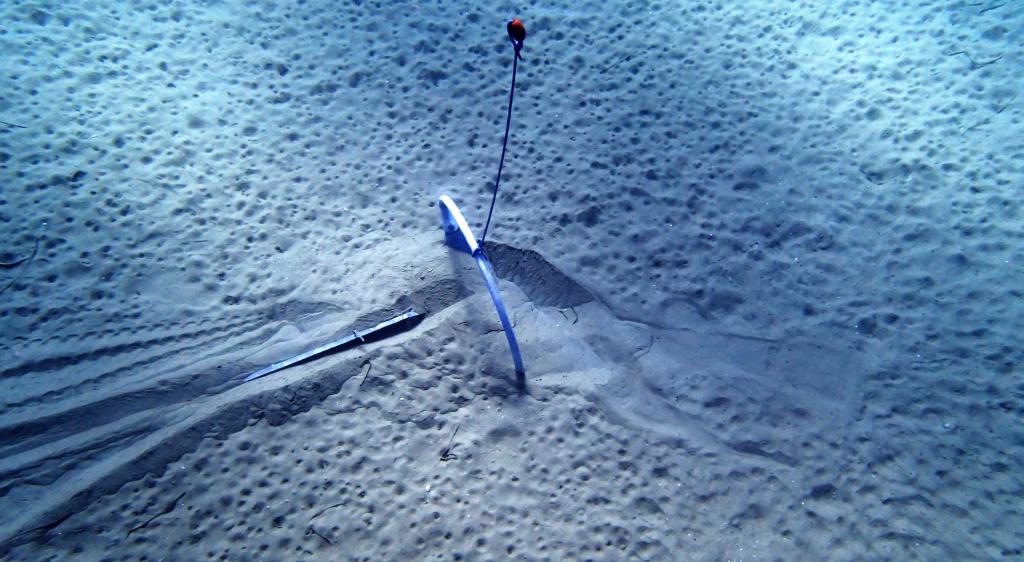Good post. If I understand you correctly, I would take issue with this last, in that I can't see how a large anchor is ever less efficient than a lighter one. If you look at the ratio of weight to surface area of the Ultra as an example you can see what I mean. A 46# anchor has a "holding surface" of 50 cm2 per pound. My 176# anchor has a holding surface of 32 cm2 per pound. Which is more likely to dive the deepest - the one that has less weight per square cm it needs to bury or the one with more weight per square cm? Clearly the later. If this reasoning is correct, and I can't see how it is not, then the heavier the anchor the deeper it will bury. Your point about requiring more force to get the anchor to bury is of course correct. I think what that means is that as the force on the vessel increases, the more holding power a diving anchor will develop with the heavier developing the most holding. This is the fundamental reason I go on about the only limitation I see in hoop style anchors - if they don't dive, their maximum hold is static so what you get setting it in 20 knots is pretty much what you'll get in 80 unless it drags and hits something solid.
I've always assumed this is why the big Claw I had worked so well, 100% of the time. It was heavy enough relative to its surface area that it always dug in deep, while a lighter Claw would not have done so.
By the way, does this mean you are finally willing to admit you are not a Zulu warrior???

In answer to your question on bigger is better. A bigger anchor can develop a higher hold than a smaller one. No doubt.
However whether the large anchor can realise that potential will depend on the load.
To be extreme, a 30' vessel simply does not have the windage to set deeply a 200lb anchor. That same vessel can fully set and bury a smaller, say 5lb,anchor. If the anchor was 'too' small that anchor will dive (its a modern anchor) and reach its maximum holding power potential and swim through the seabed (until it meets a bit of weed or shell - upon which it will surface and drag). Somewhere between that tiny swimming anchor and the monster that cannot be set deeply is the ideal - one that under no normal condition can reach that swim depth (and its maximum holding potential) but can get close to that full potential. Anything bigger than that ideal is simply ballast and a hole in your wallet. (and extra money for the anchor maker)
Anchor size charts have been developed over decades and have initially been based on pretty inefficient anchors. Modern anchors are now twice (I do not want to get picky) as good yet the weights are the same for the new, twice as good anchors, as the old anchors - and those old anchors were found to be 'about right'. We consequently seem to have doubled the safety margin (which is no bad thing). But we also, in general, are a bit more adventurous (and go further) so maybe that doubling of the safety margin might have been whittled somewhat. We also can carry more anchors which might return that safer margin.
But basically if a 100lb CQR/Bruce was good enough then a 100lb Rocna/Spade/Excel ought be equally good enough, if not twice as good.
Some say that a Bruce works better in bigger sizes, I have a friend who says they are superb beyond 70kg. I simply do not know - but this may be dependent on seabed.
I make it look black and white (which it definitely is not) - but hopefully you get the idea.
We went the other way and use an anchor slightly smaller than might be recommended (because the recommendation is based on worst case scenario) and our anchor is very, very good. When we get to, looking like, worst case scenario we deploy a second anchor (different style but same capacity), in a 'V'. Its a personal choice works for us, has done for years - not too many agree, they prefer bigger is better and in the extreme 'ridiculous is better'. There is nothing wrong with RIB - its just extra ballast and that hole in your wallet. (and I think of seaworthiness in big breaking seas when you are on passage). Now whether we need the extra anchor, in our V, I do not know - we are cautious and prefer to stay where we are and have never had the courage to test it.
The reality is that we never hear of modern anchors dragging in most seabeds as a result of them being too small (though many when they upgrade also upsize). So we hear of dragging, in weed where the anchor cannot penetrate - but not because the anchor was small (unless its mud). Consequently the evidence seems to suggest that BIB might allow you to sleep better, but might be unnecessary - and RIB is well R.
So if you know of anyone with any modern anchor that experienced dragging as a result of it being too small it would provide some background.
I'd welcome comment
Sorry no Zulus, just thick skinned Celts.






